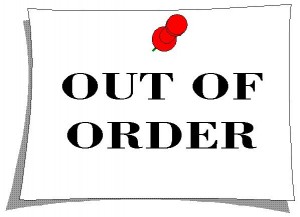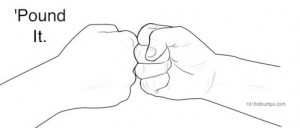Today, was just another day for this UX Consultant. I had another amazing opportunity to meet with a NYC based startup in order to sell my User Experience wares. Walking away from this particular meeting (and feeling slightly discouraged… *sigh*) I was thinking about how to improve the outcome of similar meetings, and how to move UX forward in the fast paced world of startups. There was one realization that stuck out in my mind… using the term “it depends” just doesn’t work in this world.
We, as UXers, are some how secretly trained to use the term it depends to answer questions about our work. This is not necessarily a bad thing and we usually do this for very good reasons. Those reasons being 1. we don’t want to over promise to our clients and/or partners in other parts of our organizations, and 2. we want to be sure that they understand the breadth of UX’s ability to solve problems so we can promote UX to others and make sure people know its value. Thus, when we are asked how long it will take to design a page, do user interviews and testing, figure out the solution, etc we respond with it depends. We then go into our long winded explanation of how there are so many different techniques that could be appropriate to this situation, that it really depends on nailing down the situation at hand, and defining the problem appropriately. This, of course, is still a valid way for us to sell our capabilities in larger organizations or to well established clients, but is probably a bad idea to do so in world of startups.
In startup world things move fast. Very fast. The business could be void of revenue one day, and the next have 1 – 2 million dollars in funding to spend. Thus, things in startup land really do happen overnight. Therefore, the problems with using “it depends” in this world are two fold. First, startups have no time to listen to our long winded explanations about our process and how great UX is. And, to be honest, they really don’t care. They, instead, care about their product being awesome and serving their users as best it can. Knowing the UX technique to use to get them there is your skill and is the main part of the service you are offering them. Therefore, save your explanation with these guys and gals because they don’t want the “it depends” answer. What do they want instead? The answer. The second issue with using it depends in the world of startups, is that by not tailoring the answer right away to the startup you are talking with, you are showing that you have not taken the time to listen to what they have been saying, and are not expert enough to tailor your UX process, on the spot, to their needs. Why would they spend their precious funding or revenue on you as a resource if you cannot pull this rabbit out of your hat?
Lucky for us, it’s not about magic or pulling anything out or your hat (except maybe a flushed out proposal). It’s very easy to solve the problems that it depends brings you in the world of startups. First, stop using “it depends”. At least, stop using it in the way that you have been. Instead of using it depends to preface a long explanation about how amazing UX is, use it depends to serve up options that are relevant to the specific problem the startup is looking to solve. For example, when a startup asks you how they motivate users from a competitors product to instead use their product, don’t answer like this “Well, it depends. We could do user interviews or focus groups or contextual inquiry. There are so many different methods in our tool belt to choose from!” Instead answer like this “Well, it depends on what we want to learn. If we want to get a throughout understanding of this, we could interview our target users to understand their mental models and behaviors. If we wanted to get a throughout understanding of this as well as know how our product stacks up we could do user interviews as well as some targeted usability testing with tasks that can be done on both websites. These are really the two options that are relevant to this product. In your case, given you needs, I would recommend the second option.”. See the difference? With or without it depends you need to tailor your response to your potential client. Of course, you are not going to have the exact answer, however, you should know the technique that applies to the outline of the situation that has been provided to you. If you don’t have a clear idea of the situation, use your knowledge gathering skills to get it. 
How then do you get to a point where you can surface up tailored information and feedback on the spot? Easy, learn the whys behind each and every part of your process (for more on this see: The Ultimate Key to UX Success). It is only then that you can eliminate the inappropriate use of it depends with startups. By knowing the whys, you can match the information that the startup is giving you about their problem with the appropriate tool in your tool belt. You don’t have to take the time to sell UX to them, instead you are taking their time to sell a tailored service to them and calling it UX.
By changing or eliminating your use of it depends when working with startups you are getting to the point and saving them time, as well as coming off as much more of a service professional. The only way for one to get to a point where they can tailor their wares on the spot, is to really understand the whys behind the different parts of their process. By learning these whys, you set yourself up for success. It stops being about educating others (who have little time or interest anyway) on what UX can do, and instead becomes about what you, as a UX designer, can do for others. You can know immediately what would work for this particular client and why, and this not only makes you much more of an expert in your field, but it also does one thing that the startup will be ever thankful for, saves them from having to think (pounds to Steven Krug).


